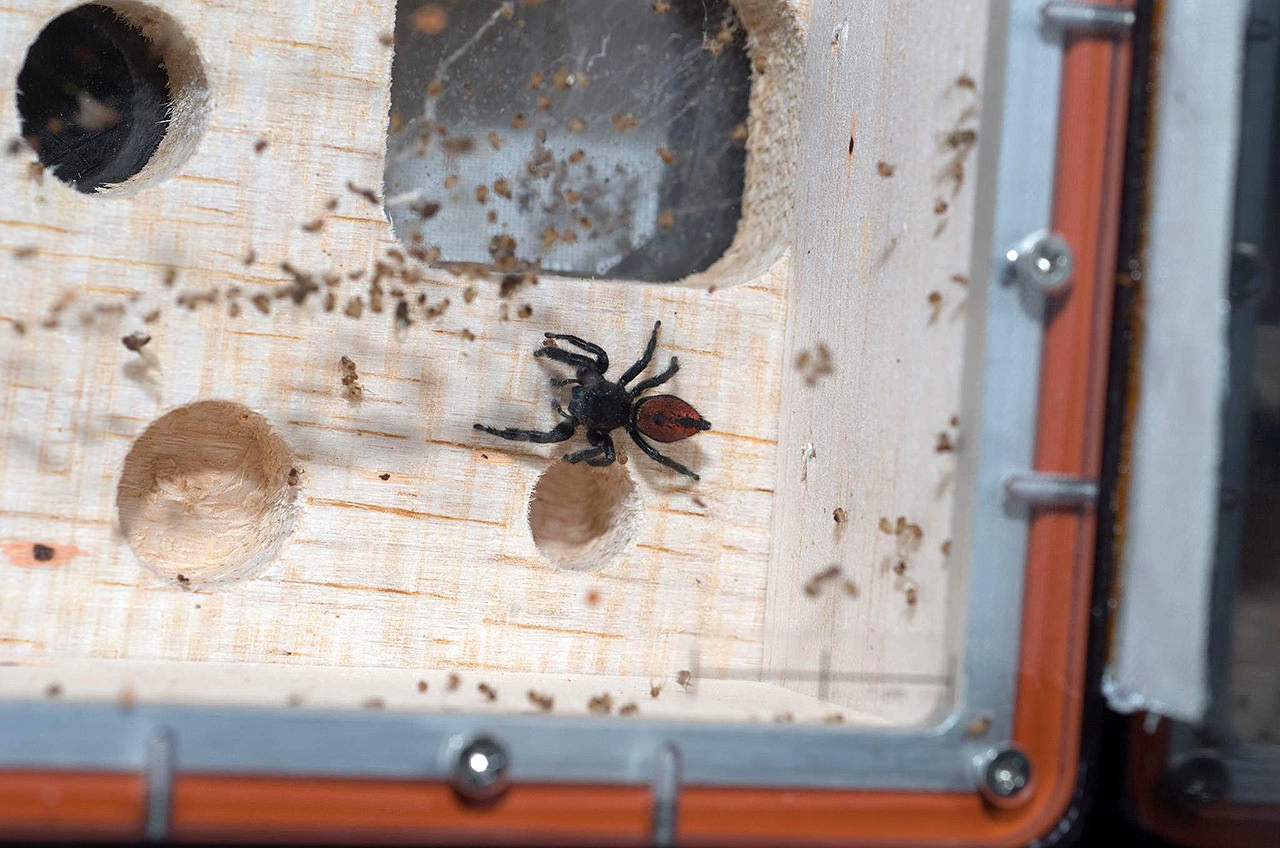Astronauts have said adapting to weightlessness is much easier than readapting to gravity when they returned to Earth. Muscle weakness, wobbly legs, and feeling like the room is spinning is common after long duration spaceflight, not to mention the long-term issues like bone loss, diminished eyesight, and a heart that has to recondition itself to pump blood harder to overcome gravity. As Canadian Chris Hadfield said, “My body was quite happy in space without gravity.”
It turns out spiders have similar issues. This Phiddipus Johnsoni, or red-backed jumping spider named Nefertiti is shown walking and preying on flies in her habitat while in orbit on the International Space Station and then doing the same while readapting to gravity on Earth. While trying to capture its prey, it ends up flopping awkwardly onto its back. No more flying like SuperSpider.
Nefertiti was in space 100 days in 2012 as part of a student-initiated science experiment of YouTube’s Space Lab, an online video contest. After returning home, this spidernaut was sent to the Smithsonian Institution’s National Museum of Natural History in Washington, D.C. and was part of exhibition of the first jumping spider to survive the trip to space. Unfortunately Nefertiti died just a few days after being sent to the museum.

